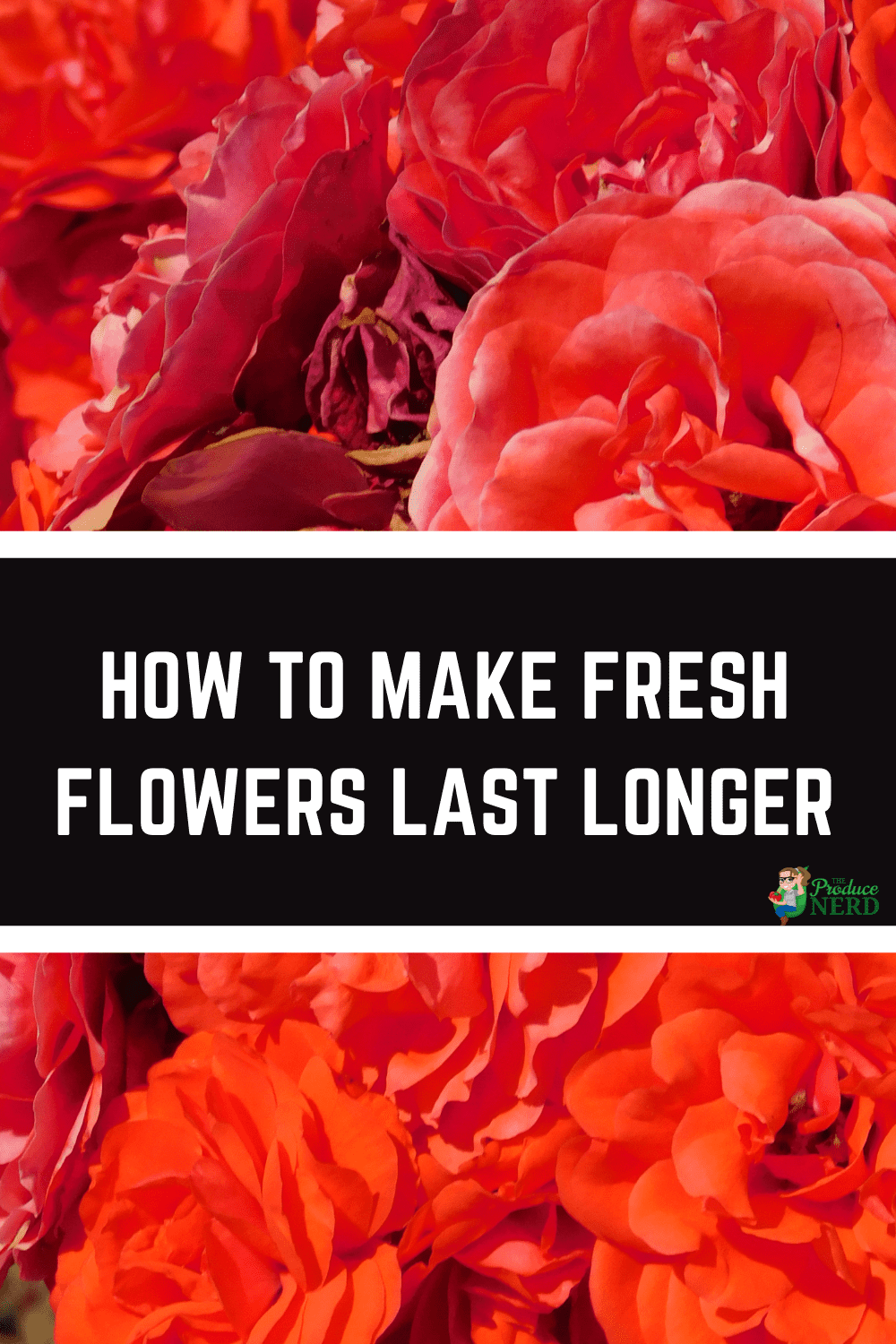While most people think about flowers on Valentine’s Day, Mother’s Day and Easter, it is an industry that must sustain itself year-round. Multiple studies have been done on how to preserve cut flowers for as long as possible to keep them in good condition for the consumer. Just like with fresh fruits and vegetables. For the consumer, though, the main issue is how to make cut flowers last longer once they get them home.
Table of Contents
How to Make Flowers Last Longer
No matter the scenario, the reality is that cut flowers do not last that long. And, a lot of that is dependent on how long it has been since the flowers have been harvested and the conditions in which they were stored and transported. However, there are steps you can take to help them last as long as they possibly can at home, including:
- Follow the Instructions – If any instructions come with the flower bouquet, follow those. The same goes for any flower food packets that come with the bouquets.
- Cut the Stems – Always cut the stems under running water before placing the flowers into the vase to re-hydrate them and to reduce the bacterial load. Flowers are shipped dry, so the process of cutting the stems under running water re-hydrates the stems, while minimizing the creation of air pockets.
- Add Flower Food – If flower food packets come with the bouquets, use those.
- Placement of Flowers – You need to be mindful of where you store your flowers. When you put them in a vase, it is easy to place them on the counter and not even notice what they are next to. However, you want to make sure not to store the flowers near any ripening fruit, such as bananas, because the ethylene produced from that fruit will cause the shelf-life of the flowers to decrease rapidly. Another big factor that plays a role is environmental conditions in the home, such as air vents and light from windows. For example, if it’s wintertime when you are receiving Valentine’s Day flowers, you need to make sure and keep the flowers away from any heater vents because those will dry out the flowers quickly.
- Change the Water – Make sure to change the water in the vase every couple of days.
Why are You Supposed to Re-cut Flower Stems?
You are supposed to cut off 1″ of the stem under running water before putting the flowers into a vase. This is done for two reasons: to remove bacteria and to re-hydrate the stem (xylem). Studies have shown that the bottom 1″ of the cut flower stem contains the majority of the bacteria. If those bacteria-filled stems are placed in water, it is a perfect growing environment for bacteria, which ultimately leads to the flowers senescing (dying) quicker. Cut flowers are shipped dry, so when you take them home and cut them before putting them into water, you prevent any air pockets from forming that may limit absorption. This needs to be done under water to reduce air emboli, which create air pockets in the xylem and block the movement of water throughout the plant.
What is the Purpose of “Flower Food”?
The purpose of the “flower food” packets that come with the cut flowers you purchase is to prevent bacteria growth. After cutting off the bottom 1″ of the stems, fill up a clean vase with water and the “flower food.”
What’s in “Flower Food”?
The ingredients will differ between companies and products, but the main components of “flower food” are:
- Sugar – Sugar provides food for the flower.
- Acid – Acid provides a more efficient environment for the stems to re-hydrate using tap water (which is commonly basic) and allows for the bactericide to be more effective at killing bacteria. The preferred pH range for your solution is 3.5-4.0.
- Bactericide – Bactericides are used to kill and prevent bacteria growth.
How to Make Your Own “Flower Food”
You can either use the packets that come with your cut flowers, or you can make your own! Making your own is also a good idea if you like to cut flowers from your yard.
Now that you know the main ingredients needed, you can use products you have at home to make your own. My very dearest Postharvest Professor from UC Davis, Mikal Saltveit, recommends using Sprite and Clorox to make your own “flower food”. The Sprite provides the acid (citric acid) and sugar, and the Clorox provides the bactericide. Your solution should consist of a ratio of:
- 1/3 Sprite
- 2/3 Water
- 1 mL Clorox
Do you have any recipes that you use at home to make your own “flower food” or tricks that you use for how to make cut flowers last longer?
If you enjoyed this post, you might also like:
- Postharvest Handling of Fresh-Cut Flowers: Trimming & Packaging Fresh-Cut Roses
- Hydrangea Varieties & Growing
- Visiting the Flower Fields in Carlsbad!
Resources
Reid, M.S., Dodge, L.L. “Flower Handlers: Sanitation is Crucial.” Perishables Handling (92): 6-7. Nov 1997. Web. 9 Feb 2018.
Reid, M.S. (2007). “Postharvest biology and technology for floricultural crops.” [PowerPoint slides].

You’re so smart!!